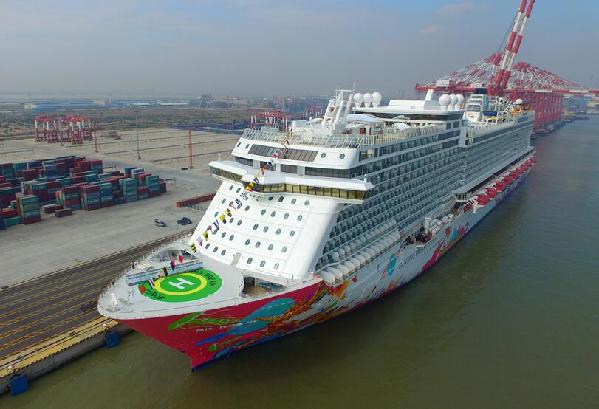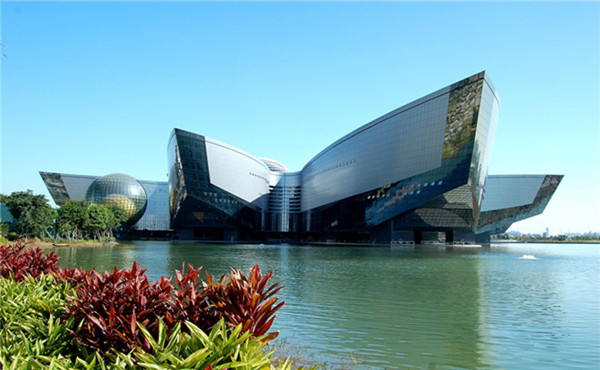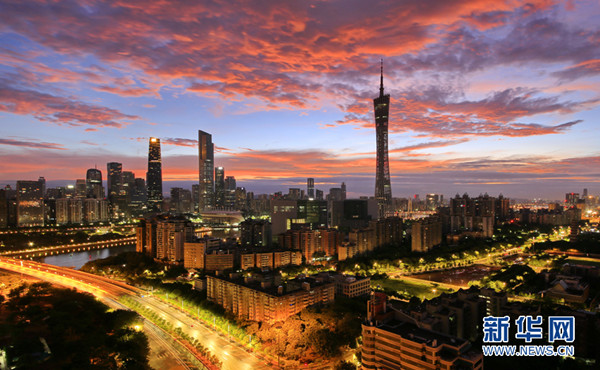Greater Bay rises as a world-class port cluster
At Nansha Port in Guangzhou, Chen Hao boards an international cruise liner bound for Okinawa, Japan, together with 1,200 passengers on Nov 2. "We now have an increasing number of choices for passenger ship routes from Nansha," Chen told a reporter from China News Service.
Because of the huge market potential of the Guangdong-Hong Kong-Macao Greater Bay, international luxury cruise ship companies such as Royal Caribbean, Dream Cruises, and Costa Crociere, are now operating in the area. The cruise terminals at Guangzhou's Nansha Port, Shenzhen's Prince Port, and Hong Kong's Kai Tak Wharf have been integrated as a passenger liner zone for the Pearl River Delta.
Chen Wanxiong, vice-president of Guangzhou Port Group, said, "As the growth of Guangzhou as a shipping hub accelerates, we shall not only introduce container shipping lines but also passenger lines in order to develop the liner-tourism economy."
The Greater Bay area consists of plentiful water channels and superior ports. A large number of wharfs spread within Guangzhou Port, Shenzhen Port, Hong Kong Port, and Zhuhai Port of the area, forming an "aquatic economic corridor".

Genting Dream berths at Guangzhou's Nansha Port [Photo/southcn.com]
San Francisco Bay Area, New York Bay Area, and Tokyo Bay Area are the world's top three bay areas in terms of economic significance. They all started with port economy and gradually evolved into growth poles for global economy through consistent reform and innovation.
The strength of China's Greater Bay area is has many comparisons. At present, the cluster of ports in the area has the largest berth capacity, the best water depth conditions, as well as the largest cargo handling capacity in the world.
According to the 2016 edition of the Lloyd's List and Containerisation International Top 100 Container Ports, three of the world's top 10 ports are in the area: Shenzhen came in third, followed by Hong Kong in fifth and Guangzhou in seventh.
Guangdong province plans to turn Guangzhou Port and Shenzhen Port into global shipping pivots, which will benefit neighboring ports such as Dongguan Port and Zhuhai Port and connect Hong Kong and Macao. A world-class cluster of ports is set to rise in the Pearl River Delta.
"Currently, Guangzhou's Nansha Port has 16 container berths with capacity of 100 to 150 thousand tons," said Yuan Yue, deputy director of Guangzhou Port administration. "The world's largest container ships can be well served."
Huang Bo, another deputy director of Guangzhou Port administration, added, "Through our continuous efforts, the cargo handling capacity of Guangzhou Port is expected to reach 600 million tons and 25 million standard containers by 2020."
Some experts believe that Hong Kong Port and Shenzhen Port are respectively focused on international container trans-shipment and trunk transport for goods from the Pearl River Delta, while Guangzhou concentrates on coastal shipping for the goods across the entire country. The three ports can seek to integrate the supply chains and achieve the most desirable effect through further cooperation.


 Print
Print Mail
Mail 2017 Fortune Global Forum
2017 Fortune Global Forum Breathtaking autumn views in Guangzhou
Breathtaking autumn views in Guangzhou Guangdong Science Center
Guangdong Science Center Rice noodle roll
Rice noodle roll Guangdong folk arts and crafts fair opens in Guangzhou
Guangdong folk arts and crafts fair opens in Guangzhou Red sky at morning after typhoon warning
Red sky at morning after typhoon warning